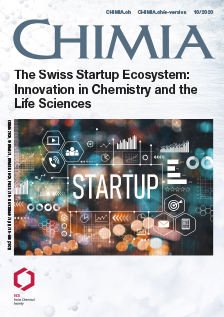Cartridge-based Automated Synthesis – A New Tool for the Synthetic Chemist
DOI:
https://doi.org/10.2533/chimia.2020.808PMID:
33115565Keywords:
Automated synthesis, Discovery chemistry, Laboratory automation, Medicinal chemistry, Synthetic chemistryAbstract
Despite recent advances in reaction methodologies, organic synthesis remains complex and challenging. Many of the fundamental processes in use have not changed in over 100 years, with a large proportion of the work being carried out manually, using lengthy procedures and difficult or hazardous reaction conditions. As such, organic synthesis still presents a bottle-neck in discovery research. Endeavours to automate synthesis in discovery, through robotic platforms, have so far not been widely successful because the highly complex nature of such machines, and the level of skill required for their operation, presents a barrier too great for most discov- ery chemists. Synple Chem has developed a safe, easy to use, efficiency-enhancing automated technology for the acceleration of discovery research. The automated flow-batch hybrid system utilises a range of innovative pre-packed reagent cartridges for different reaction classes, along with pre-programmed, highly optimised but editable reaction protocols. The combination of these three key elements, provides users with a convenient, easy to use, time-saving technology that makes the synthesis of molecules far simpler, faster and more efficient. The described technology offers all discovery chemists access to real synthesis automation without any of the barriers that have previously restricted its utility.Downloads
Published
2020-10-28
Issue
Section
Scientific Articles
License
Copyright (c) 2020 Benedikt M. Wanner, Paula L. Nichols, Tuo Jiang

This work is licensed under a Creative Commons Attribution-NonCommercial 4.0 International License.
How to Cite
[1]
Chimia 2020, 74, 808, DOI: 10.2533/chimia.2020.808.







